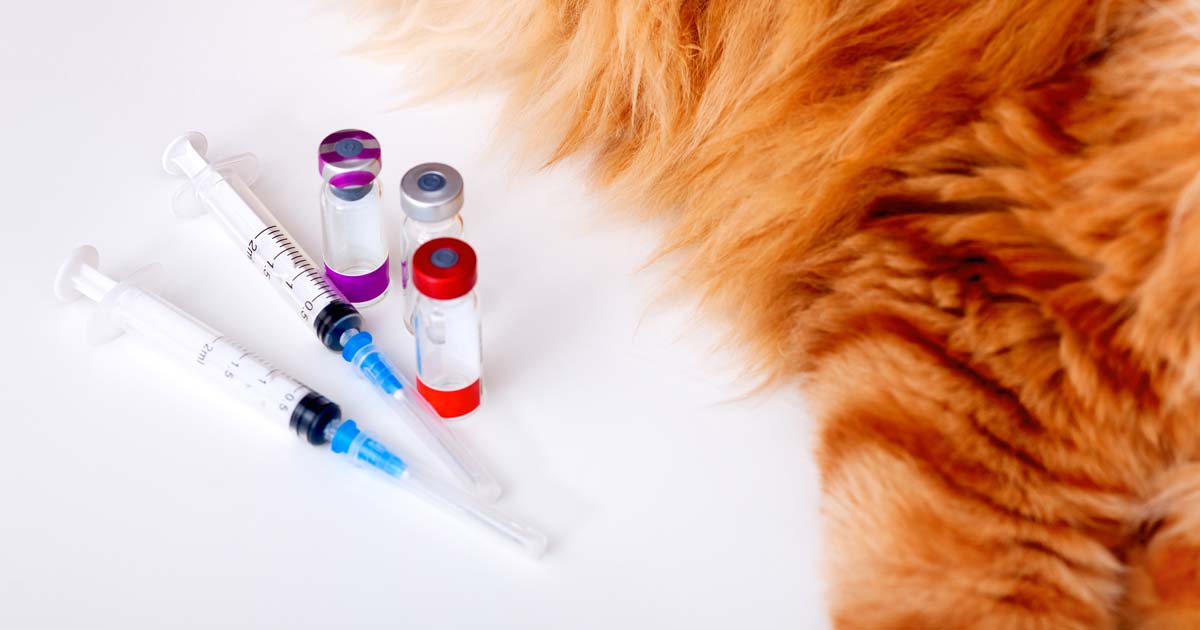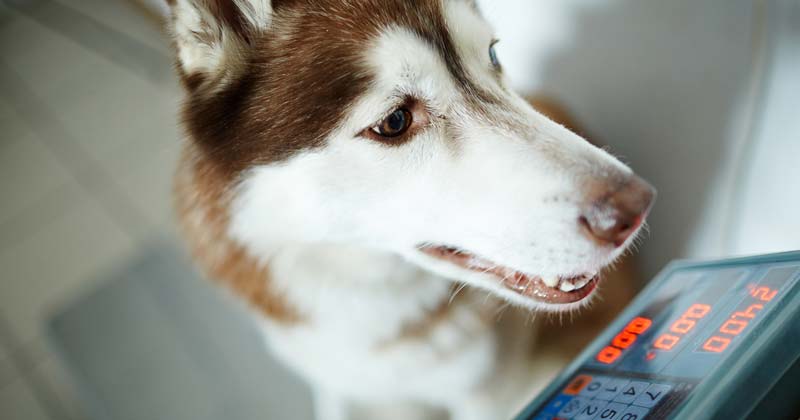4 Jun 2020

Image © rosinka79 / Adobe Stock

Diabetes mellitus is a common endocrine disease encountered in canine and feline medicine. The aetiology and pathogenesis of the disease is complex, and involves both genetic and environmental factors. In 2016, it was estimated that 1 in 300 dogs and 1 in 200 cats in the UK have diabetes (O’Neill et al, 2016).
This article aims to give a brief overview of the aetiology and management of the disease.
Diabetes mellitus (DM) is a chronic disorder of carbohydrate metabolism due to relative or absolute insulin deficiency.
It can be defined as a deficiency of insulin (the hormone produced by the pancreatic beta cells in response to an increase in blood glucose), an inability to use insulin (insulin resistance) or a combination of both (Ackerman et al, 2018).
Many causes of diabetes exist in dogs and cats. Predisposing factors include immune-mediated beta cell destruction, chronic pancreatitis, Cushing’s disease, acromegaly in cats and obesity, as well as other diseases or infections that can cause insulin antagonism (Nelson and Couto, 2009). The most commonly occurring is degeneration of the beta cells in the exocrine pancreas, which, in turn, leads to an insulin deficiency.
Most cases of spontaneous diabetes occur in middle-aged entire dogs and senior cats. A UK study reported an increased risk of diabetes in certain breeds, including Tonkinese, Burmese and Norwegian forest (O’Neill et al, 2016).
Typically, insulin is produced – in conjunction with glucagon – by the pancreas. The pancreas is a V-shaped gland that has both exocrine (digestive) and endocrine (hormonal) functions, and lies in the cranial abdomen close to the stomach and duodenum. The endocrine pancreas consists of the islets of Langerhans, which secretes two hormones that are essential in the maintenance of the blood glucose – insulin and glucagon.
Insulin acts to decrease blood glucose by several mechanisms, such as conversion to fatty acids or glycogen, or uptake into cells. Meanwhile, glucose reverses these processes. Together, the hormones keep blood glucose within the normal range of 4mmol/L to 7mmol/L in the blood (Maltman, 2009).
The classification of diabetic dogs and cats is modelled from human medicine as type one or type two; however, a uniformly accepted classification system has been lacking in veterinary medicine (Gilor et al, 2016).
The types are:
Type-one diabetes is the most common in dogs and causes destruction of the pancreatic beta cells, leading to an absolute lack of insulin. The most vulnerable group are middle-aged, unspayed bitches because of the effect of progesterone. Progesterone stimulates growth hormone, which is diabetogenic, meaning it can induce DM shortly after a season.
Type-two diabetes is the most common in cats. DM in cats is being increasingly diagnosed (Sparkes et al, 2015). Type-two DM usually results from a combination of hypoinsulinaemia and insulin resistance.
While insulin resistance is likely to be multifactorial, the most common cause in cats is obesity. Obesity increases the risk of diabetes fourfold. At least 60% of obese cats will become diabetic over time (Hoenig et al, 2006). Male cats are thought to be more prone to diabetes, along with those older than 12 years of age. It is possible to reverse insulin resistance caused by obesity through correction of bodyweight, therefore allowing the cessation of insulin therapy eventually.
DM may also occur secondary to endocrine conditions in both dogs and cats due to factors that interfere with or antagonise insulin – for example, cortisol (hyperadrenocorticism/Cushing’s), growth hormone (acromegaly in cats), progesterones and pancreatitis.
It is important also to remember the effects that drugs and stress can have on an animal’s blood glucose levels – particularly in cats.
The most common clinical signs of DM include:
Other clinical signs can include hepatomegaly, lethargy, cataract formation (dogs) and diabetic neuropathy (mainly cats). Signs are usually slowly progressive over weeks to months.
Insulin induces cellular uptake of glucose from the blood, which is used by tissues. When insulin is not produced, hyperglycaemia occurs. Glucosuria results when excess blood glucose levels become too high for the renal tubular cells to resorb glucose from the glomerular ultrafiltrate.
Polyuria is a subsequence of glucosuria, which induces an osmotic diuresis, resulting in dilute urine specific gravity. Polyuria is compensated for by polydipsia, to prevent dehydration. Diabetic patients are polyphagic, regardless of hyperglycaemia, because cells are unable to use glucose. Therefore, the patient still feels hungry and the body feels it needs more food to compensate (Nelson, 2000).
Weight loss in diabetic patients results from the inability of the tissues to use glucose, which causes the body to break down muscle, fats and protein. This weight loss is due to catabolic metabolism. Ketones are produced from this catabolic state and their increase can lead to ketoacidosis. Diabetic ketoacidosis is a medical emergency that arises from complications of diabetes.

A diagnosis of DM by a veterinary surgeon is based on persistent fasting hyperglycaemia, glucosuria and the presence of characteristic clinical signs. In cats, stress-induced hyperglycaemia can be a frequent problem, and multiple blood and urine samples may be required to confirm the diagnosis.
Measurement of serum fructosamine can assist in differentiating between stress-induced hyperglycaemia and DM. It is important to ensure a definitive diagnosis of DM before treatment starts. A high blood glucose rating alone is not enough to diagnose the condition.
The foundation of treatment for DM in dogs and cats is insulin therapy, along with dietary modification. Diet and weight reduction alone will not control the disease, so initial therapy with insulin is required.
Performing an ovariohysterectomy in intact diabetic bitches will support remission, regardless of the underlying cause of the diabetes (Behrend et al, 2018).
Often it is the VN who plays a key role in the long-term management of diabetic patients. The goal of monitoring diabetic cats and dogs is to control clinical signs of DM while avoiding hypoglycaemia.
The basic monitoring tools used will be glucose curves and fructosamine sampling. Glucose curves are an essential tool for monitoring diabetic patients. It is a relatively simple technique that provides a proper indication of stability and estimates the true nadir. Fructosamine is a useful diagnostic tool in DM. It confirms hyperglycaemia and assesses overall glycaemic control. It should not be used to decide whether insulin levels need to be altered, but it will give an indication of whether a glucose curve should be performed.
Establishing a daily routine is important to ensure stability for patients with DM. Insulin injections should be given at set times, and mealtimes and quantities must be uniform. The same amount of exercise every day should prevent any variation in insulin requirements. Exercise maintains glycaemic control by increasing the cell’s glucose use and will help with weight loss. Excessive alterations to either food intake or exercise can disrupt the balance.
The goals of dietary therapy are to optimise body condition and weight with appropriate protein and carbohydrate levels, fat restriction, and calorie and portion control. Weight loss in obese patients and stopping DM-associated weight loss are treatment goals for diabetic canine and feline patients.
Cats and dogs have different dietary requirements. Recent evidence has supported the use of high-protein, low-carbohydrate diets in cats (Bruyett, 2019). Studies have shown, in a proportion of cats, that glycaemic control has improved and reduced insulin requirements, and such diets appear to reduce/eliminate the need for insulin therapy (Sparkes, 2009).
In dogs, diets high in fibre and complex carbohydrates are preferred. This provides slow release of sugar into the blood over an extended period, preventing postprandial glycaemic peaks.
Owners will play a vital role in the success of therapy in their diabetic pet. The goal of client education is to give the pet owner a realistic idea of the commitment involved in managing his or her pet’s DM, along with positive encouragement that successful disease management is possible, but can take time to achieve.
Compliance is very important if the pet’s routine is to be maintained. An essential aspect of successful DM management is to ensure the owner of a diabetic dog or cat is capable of administering insulin, recognising the clinical signs of inadequately managed DM and monitoring blood glucose levels at home, although this is ideal, but not mandatory (Behrend et al, 2018).
Owners need adequate access to the veterinary team to answer questions and troubleshoot common problems. Owner education should include information regarding recognition and management of hypoglycaemia and ketosis.
Home monitoring of glucose has been shown to have a positive impact on management. This can include blood glucose checks using a marginal ear vein. Continuous glucose monitoring devices have become available and are being used in diabetic cats and dogs (Corradini et al, 2016). These systems involve placing a sensor – typically over the back of the neck – that can stay in place for up to two weeks continuously measuring interstitial fluid glucose levels, which can be read using a smartphone app.
Periodic home monitoring of urine can be useful and should be checked by owners twice a week as changes in pH, or presence of blood or ketones, may indicate urinary tract infections or ketosis, which should prompt immediate contact with the veterinary practice for further advice. Urine testing glucose may be detected in the urine; urine glucose correlates poorly with blood glucose and, therefore, the insulin dose should not be changed based on urine glucose alone (Ackerman et al, 2018).
Monitoring water intake often provides useful information on diabetic stabilisation, with good control being associated with a normal water intake. According to Martin and Rand (2007), one of the parameters considered to be the most useful and practical indicator of clinical DM control is the amount of water consumed over 24 hours for cats.
It is vital that owners keep a diary recording all the monitoring and treatment information so an accurate record exists of what is happening with their diabetic pet and trends or changes in a patient can be noted. Records should include the time, dose and type of insulin used; food and water intake, weight and behavioural information; and urine and blood glucose results, and their timings (Ackerman et al, 2018). Records could be in the form of a written diary, computer spreadsheet or via an app.
DM is a complex medical disorder; therefore, a thorough understanding of its pathogenesis and management is essential. DM is a disease where veterinary nurses can have huge involvement and influence to support the vet and owner.
Long-term success depends on the understanding and cooperation of the owner, but with support from the veterinary team it is possible to achieve a good quality of life for pets.